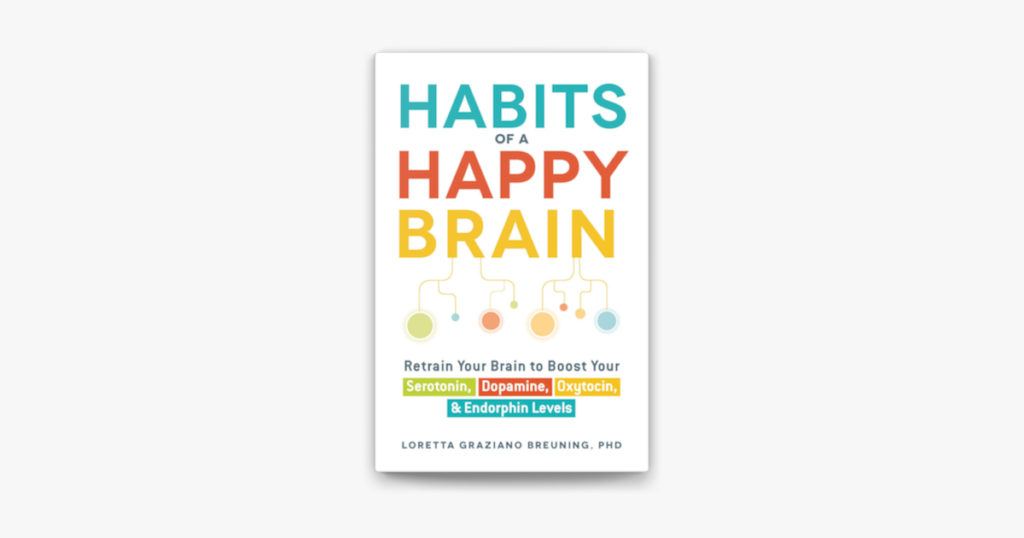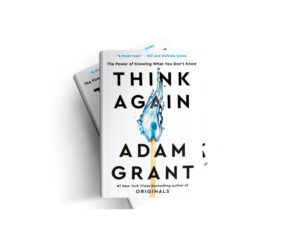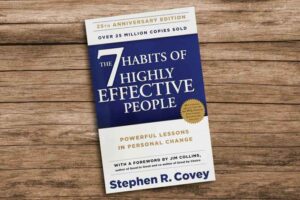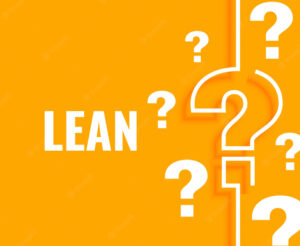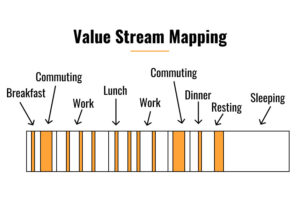Download this executive summary in PDF: Habits of a Happy Brain by Loretta Graziano Breuning
Chapter 1: Your Inner Mammal
- We inherited a brain focused on survival.
- Four “happy” chemicals turn on when something is good for our survival:
- Dopamine: seek rewards
- Endorphin: ignore physical pain
- Oxytocin: build social alliances
- Serotonin: get respect from others
- The cortex and limbic system work together to keep you alive.
- Repetition of experiences happy or unhappy builds up your neuronal pathway.
- As your brain seeks good feelings as a guide for survival, we may decide to eat a doughnut (feeling good) to reduce stress (bad feeling) induced by cortisol.
- Even if cortisol makes you feel bad, it is necessary for survival.
- Alcohol, food, drugs, sex, and money can stimulate happy feelings when you feel bad.
- Love and reproduction are encouraged by our happy hormones (dopamine by the “chased”, oxytocin by touch and trust, serotonin by the status, endorphin by the pain of laughing and crying, cortisol by the loss of a loved one).
Chapter 2: Meet Your Happy Chemicals
Dopamine
- We get dopamine when we reach a goal or when something triggers our excitement.
- The neuronal pathway is built according to our personal experience.
- When we are used to an expectation, we don’t have the dopamine rush anymore.
- The level of dopamine depends on the potential of the reward.
- Dopamine stimulates us to search for more dopamine.
Endorphin
- Endorphin masks pain for a short time for us to escape danger when we are injured.
- Pain signals that our body is suffering.
- Endorphin doesn’t mask social pain.
- Adrenaline is not the same as endorphin, adrenaline provides energy to handle an emergency.
Oxytocin
- Oxytocin provides the pleasure of belonging and safety.
- Mammals have oxytocin when they feel safe in numbers.
- Birth generates a huge boost of oxytocin between the newborn and the mother.
- Touch triggers also oxytocin.
- Herd behavior makes us trust the judgment of others.
- Reptiles don’t have oxytocin, a lizard doesn’t trust another lizard.
- Small brain animals are born with the necessary knowledge to survive in a specific environment but die fast when they are out of this environment.
- Big brain animals need more time to mature but their brain can learn from the environment.
- With oxytocin, a mother will invest more time to protect the newborn.
Serotonin
- Serotonin makes social dominance feels good.
- We shift fluidly between the dominant and subordinate positions during the day.
- When in a position of dominance, you have secure access to food, shelter, and mating opportunities.
- In a group, the strongest has priority over the weakest.
- Social dominance is different from socioeconomic status. Serotonin level depends on the neuronal pathway you have built. You can be wealthy and still feel unsafe.
Chapter 3: Why Your Brain Creates Unhappiness
- Reptiles, fish, amphibians, and even worms have cortisol.
- Cortisol creates pain, fear, stress, and anxiety.
- It enables you to detect pain and threat before it happens without the need for rational thinking.
- Our ancestors were facing death problems, the problem we face in our modern world is less extreme but we still have the same mechanism wired in our brains.
- We learn what to fear from our own experiences.
- Social group triggers good and bad feelings.
- Primates have mirror neurons, we wire ourselves when watching someone get a reward or face a threat.
- Mirror neurons allow us to feel other people’s pain.
- In a social group, we build a shared sense of threat.
- When a baby has needs, cortisol will make him feel bad, he will cry to get attention.
- When you feel your status is lower than someone else, you get some cortisol.
- Our cortex seeks evidence of threats to feel safe.
- Your cortex promotes survival by looking for logical explanations of what your mammal brain feels is true.
- A lizard doesn’t have expectations but a human with a cortex predicts future pain and rewards. When it doesn’t match, we get some cortisol.
- A brain can construct an image of a bad world despite abundant evidence of good.
Chapter 4: The Vicious Cycle of Happiness
Dopamine disappointment
- Dopamine is triggered by new rewards.
- The brain habituates to good things, you don’t get the rush of excitement of the first time anymore.
- Dopamine motivates us to find the next “first high” by doing something good for our survival.
- The act of seeking your reward provides more dopamine than the actual reward.
Endorphin disappointment
- Endorphin masks the pain, you get euphoric when you have a rush of endorphin.
- You need more and more pain to trigger the rush of endorphin.
- When our ancestors were starving, they got a rush of endorphin to encourage them to forage for food which is good for survival.
- Synthetic endorphin undermines our natural happy-chemical mechanism and we need more to get the same effect.
- Social pain doesn’t trigger endorphin but endorphin can mask social pain.
Oxytocin disappointment
- Oxytocin is triggered by physical touch and bonding.
- Oxytocin teaches us to stay in a group for survival.
- We stay together despite internal aggression because we fear external aggression even more.
- Alcoholics bond together because of oxytocin, but when someone wants to fight this bad habit, the “friends” will undermine his effort.
- We dream to join a group to feel safe but as we are mammals, there are internal conflicts because of cortisol, then we start to look for another group to fit in.
Serotonin disappointment
- Serotonin surges when we get respect.
- Some people impose their wishes on others to get some respect.
- In love, we want the attention of a higher-status person.
Happy habits help you deal with disappointment
- Each time you feel bad, you will naturally fall back to an old habit that makes you feel good.
- Breaking an old habit is difficult because losing the happy habit makes the person threatened.
- The best way to break this vicious circle is to do nothing when you feel threatened. You allow yourself to build a new pathway.
Chapter 5: How Brain Wires Itself
Five Ways Your Brain Builds Its Wiring
- We are born with many neurons, experiences determine how our brain is wired.
- Myelin is the coating around neurons that makes neurons very efficient at conducting electricity.
- Repeated experiences build the neural network with myelination of the neurons.
- A synapse is a gap between one neuron and the next.
- Repetition develops synapses gradually
- Emotion develops synapses instantly.
- Neurons atrophy if they’re not used.
- New synapses grow between neurons you use so you connect ideas.
- Receptors make you process feelings, they also grow or atrophy if not used.
Finding Your Free Will
- Your limbic brain provides you with happy chemicals to guide you but it is your cortex that decides how to act on the options.
- Following neuronal pathways is easier than creating new ones.
- Before languages, our ancestors learned survival skills with repetition and emotion with the mirror neurons.
- Having numerous neurons is metabolically expensive.
- Our neuronal pathways are built during our childhood, we can’t delete an old circuit nut we connect them in new ways.
- Find a healthy habit with few side effects to replace your urge for bad behavior. Repeat long enough to build a new neuronal pathway.
Chapter 6: New Habits For Each Happy Chemical
New Dopamine Habits
- Celebrate your success daily, no success is too small.
- Take real action that moves you toward your goal.
- Divide the challenge into small chunks.
- Adjust the difficulty, if too easy you will not feel the reward, if too hard you will not even try.
New Endorphin Habits
- Laugh to release your fear.
- Feel free to cry to release the tension in your muscles (but don’t make crying a habit).
- Practice some sports to stimulate your weaker muscles and stretch.
Building New Oxytocin Circuits
- Build some social trust with animals, crowds, and digital friends, there is less risk of disappointment.
- Build this trust gradually step by step.
- Being trusted releases also oxytocin.
- Get a massage.
Building New Serotonin Circuits
- Express pride in what you have done daily.
- When you are in a subordinate position, enjoy not being responsible.
- When you are in the dominant position, enjoy the respect you get.
- Don’t look people down even if it feels good.
- Learn to feel good even when you are not in control, and do the opposite of what you are used to doing (being a bit chaotic if you like order).
The Challenges of Establishing a Habit
- We will tend to fall back to our old neuronal pathways because it is easier than building new ones.
- We enjoy music not because it is “good” but because we have a surge of dopamine when we predict what comes next. The sweet spot is between novelty and familiarity.
- Commit yourself to a few new habits to successfully build them.
Chapter 7: Your Action Plan
- Life is a series of tradeoffs, there is no one best way to make you feel happy.
- Short-run vs long-run (predictions depend on the information filtering built in your old circuit).
- Known vs unknown (uncertainty gives you more options than certainty).
- Individual vs group (you cannot be in both situations at the same time, learn to enjoy your situation).
- Free will vs dependency (find the joy of meeting your own needs, celebrate your freedom to choose instead of putting down those who have power over you).
Chapter 8: Overcoming Obstacles to Happiness
Reason #1: “I Can’t Lower My Standards”
- Big success doesn’t guarantee happiness.
- Giving yourself high standards (saving the world) is the excuse to explain why you are not feeling happy.
- As you fail to reach these high standards, your sense of superiority triggers serotonin. Your suffering gives you an excuse for bad habits such as drinking/eating junk food/smoking/raging.
Reason #2: “I Shouldn’t Have to Do This”
- You feel life is unfair, it is easy for others, and it is your excuse to indulge yourself.
- Some children learn to expect others to please them, they don’t know how to please themselves.
- Blaming others and feeling wronged is a vicious cycle that triggers happy chemicals.
Reason #3: “It’s Selfish to Focus on Your Own Happiness”
- Each adult is responsible for his happiness, our brain is selfish.
- If you do good for others and don’t get the reward, you will feel bitter.
- Rescuing other triggers happy chemicals (serotonin for respect, oxytocin for collaboration, dopamine for accomplishment).
Reason #4: “I Want to Be Prepared for the Worst”
- Your brain is scanning for old threats because it equates old pains and rewards with survival.
- Start looking for the good and not the threats.
Reason #5: “I Won’t Be Able to Do This”
- It is easy to imagine failure.
- Be honest with yourself that you may be disappointed but you still can try.
- Commit for 45 days to break the vicious circle.
Reason #6: “Who Can Be Happy in Such a Flawed Society?”
- Blaming society for our bad feelings distracts us from understanding our internal system.
- Imagining solving the system and bonding stimulate the happy chemicals.
Reason #7: “I Will Be Happy When…”
- Getting closer to a goal stimulates happy chemicals but each obstacle stimulates unhappy chemicals.
- Reaching a big goal provides a surge of happy chemicals for only a while.
- Build the habit of having multiple sources of happiness.
Chapter 9: Rely On Tools That Are Always With You
- Mirror: mirror the person who has the habit you want to build.
- Balance: develop the happy chemicals you’re not already best at.
- Graft: build new happy circuits onto old happy roots.
- Energy: save your energy for when you are building your new habit.
- Legacy: spend more time with your children/grandchildren.
- Fun: make the new behaviors fun.
- Chunk: divide difficult challenges into smaller parts.
- Satisfice: a satisfactory solution may be better than an endless quest for optimal.
- Plan: start building circuits now so they’re ready when you need them.
- Visualize: your neural pathways are building even though they’re not visible.
Download this executive summary in PDF: Habits of a Happy Brain by Loretta Graziano Breuning

